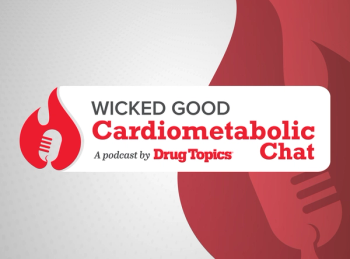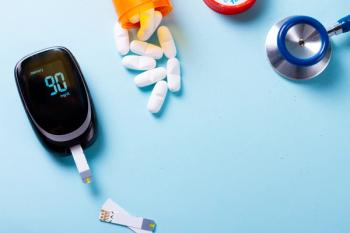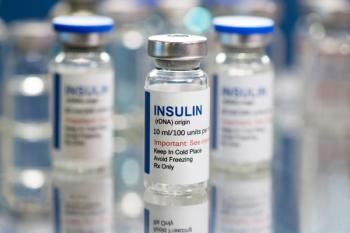
- Drug Topics November 2021
- Volume 165
- Issue 11
Launch Your Own Diabetes Prevention Program
The CDC estimates that 83 million Americans have prediabetes and that 84% of them don’t know it and community pharmacy can play a major role in preventing diabetes.
The flooding tide of individuals with elevated blood glucose levels is a daunting challenge and an alluring opportunity. The CDC estimates that 83 million Americans, more than 1 in 3, have prediabetes and that 84% of them don’t know it. The CDC also knows that community pharmacy can play a major role
in preventing and delaying progression to diabetes. The concept grew from The Asheville Project, a pharmacy-based, chronic-disease treatment and prevention program launched by the city of Asheville in North Carolina in 1997.
The numbers are compelling. For individuals with prediabetes, losing 5% to 7% of initial body weight and increasing physical activity to 150 minutes per week can reduce the risk of developing type 2 diabetes by 58% (71% for people older than 60 years).1
“We were doing diabetes prevention through lifestyle modification. We just didn’t know to call it that 25 years ago,” said Barry Bunting, PharmD, who helped launch and manage The Asheville Project. He now manages the American Pharmacists Association (APhA) Diabetes Prevention Program (DPP) funded by the CDC.
“We were educating people on their risk of progressing to diabetes, giving a lot of personal coaching on eating a little better, moving a little more, and losing a few pounds,” Bunting said. “That is the same script the CDC uses in its lifestyle-change DPP.”
DPP Elements
The CDC has partnered with APhA, the National Community Pharmacists Association (NCPA), and other pharmacy groups to extend the reach of its DPP to the local level. The CDC is also working with state and local health departments, Medicaid, and advocacy groups such as the Association of Diabetes Care & Education Specialists (ADCES) to involve pharmacists in expanding access to diabetes prevention services through early intervention.
“I am a huge pharmacy fan,” said Angela Forfi a, ADCES senior manager of prevention. “And not just because pharmacies have been in diabetes prevention since the very beginning. It’s all about access to pharmacies, pharmacists’ training, and the reality that people with prediabetes are overrepresented in pharmacy patient
populations. Pharmacists know that lifestyle intervention is twice as effective as off-label metformin at reducing the risk of progressing from prediabetes to type 2 diabetes.”
Dozens of pharmacies, primarily independents and some grocery store outlets, have launched DPPs.
“This is the direction we are headed,” said Benjamin McNabb, PharmD, owner of Love Oak Pharmacy in Eastland, Texas. “I call it the community wellness model. The approach is managing diseases in the community before they get to the point where you need medication and other interventions. It’s about providing information, providing care at the personal level to keep potential problems from escalating. And it’s one more service you can eventually get paid for.”
A DPP has 3 tiers. Tier 1 is promoting awareness of prediabetes. Pharmacy engagement can be as simple as bag stuffers and countertop displays, quick conversations with patients who could be at risk, and social media messages.
“Social media, patient emails, and flyers in the store have been fantastic for us,” said Amber Suthers, MSAH, CPhT, clinical services coordinator at Surgoinsville Pharmacy in Tennessee. The pharmacy was part of NCPA’s first DPP cohort.
“And prediabetes is an obvious conversation when a patient comes in to pick up meds for blood pressure and cholesterol,” Suthers added, “especially if they seem on the heavy side, like so many are. People don’t always recognize their potential for diabetes.”
The CDC provides promotional materials and tips in an action guide for community pharmacists (www.cdc.gov/diabetes/prevention/pdf/pharmacists-guide.pdf). A public information website, Do I Have Prediabetes? (https://doihaveprediabetes.org/), provides online risk assessment, links to accredited programs by zip code, and other information Tier 2 is screening, testing, and referring. Moving from awareness of prediabetes to screening is an easy step.
The CDC and the American Diabetes Association have a 7-question screening test that can be completed online (www.cdc.gov/prediabetes/takethetest/#section6) or printed out.
Pharmacies in some states can also provide onsite glycated hemoglobin (HbA1c) testing to determine blood glucose levels. Patients with prediabetes (HbA1c level, 5.7%-6.4%) can be referred to a CDC-recognized program, including the pharmacy’s own program if available.
Medicare and some Medicaid programs cover DPPs. So do some state and local public health programs, commercial insurers, and employers.
DPP providers can charge a flat fee or offer a sliding scale to boost access.
Tier 3 is offering your own DPP. “When we find prediabetes, we tell them that their medications or other risk facts may qualify them for our education classes,” Suthers said. “People are doing DPPs even with the challenges of [COVID-19]. We have participants who have met their weight loss and exercise goals through the pandemic. Based on our first 6 months of data that we submitted to the CDC earlier this year, we will meet the requirements for reimbursement.”
Launching a DPP
Starting a DPP begins with an application to become a CDC-recognized delivery organization. Pharmacies agree to use a CDC-approved curriculum in a 12-month lifestyle-change program that includes at least 16 weekly 1-hour sessions for the first 6 months and 6 monthly sessions for the next 6 months.
“You’re asking for 24 hours of participants’ lives over the next year,” Bunting said. “[A] DPP is all about lifestyle changes, small changes over time, nothing dramatic or extraordinary. They get a coach, someone to help along the way and to hold them accountable. And the group dynamic, either in person or...online, makes a huge difference in results.”
Classes are conducted by a trained lifestyle coach. That person can be a pharmacist or, more often, a pharmacy technician.
“From an economic perspective, it makes more sense to involve a technician to lead the program,” said John Beckner, RPh, senior director for strategic initiatives at NCPA. “The pharmacist needs to be visibly involved, but the more successful pharmacies have trained multiple lifestyle coaches, not just the pharmacist, to share the task and provide more flexibility in scheduling.”
NCPA works with ADCES to train pharmacists and technicians. Pharmaciesenrolling in a DPP through NCPA can get more than $5000 in financial support, including coach training, technology to document patient encounters, and financial incentives. Other industry organizations offer similar support, largely funded by the CDC.
Finding patients can be challenging. Social media, bag suffers, store displays, and even newspaper ads can work, depending on local demographics and the patient population. Patients in existing diabetes self-management education and other diabetes-related services can be good referral sources.
“There aren’t a lot of people actively looking to change their lifestyle,” Bunting said. “Getting the message out about prediabetes through as many
channels as possible is vital, even if people aren’t motivated to change right now. We need to plant that seed so that when they have a wake-up moment, they know their pharmacy can help.”
Articles in this issue
about 4 years ago
New Advances in Breast Cancer Therapyabout 4 years ago
Sleep Deprivation Can Mimic ADHDabout 4 years ago
Making Life Easier for Families of Children With Type 1 Diabetesabout 4 years ago
Patient Education is Key as Biosimilar Approvals Increaseabout 4 years ago
Research Suggests Ways to Decrease Food Allergy Prevalence in Kidsabout 4 years ago
The Cost of Antibiotic Resistanceabout 4 years ago
Biologics for Children With AsthmaNewsletter
Pharmacy practice is always changing. Stay ahead of the curve with the Drug Topics newsletter and get the latest drug information, industry trends, and patient care tips.




































































































































